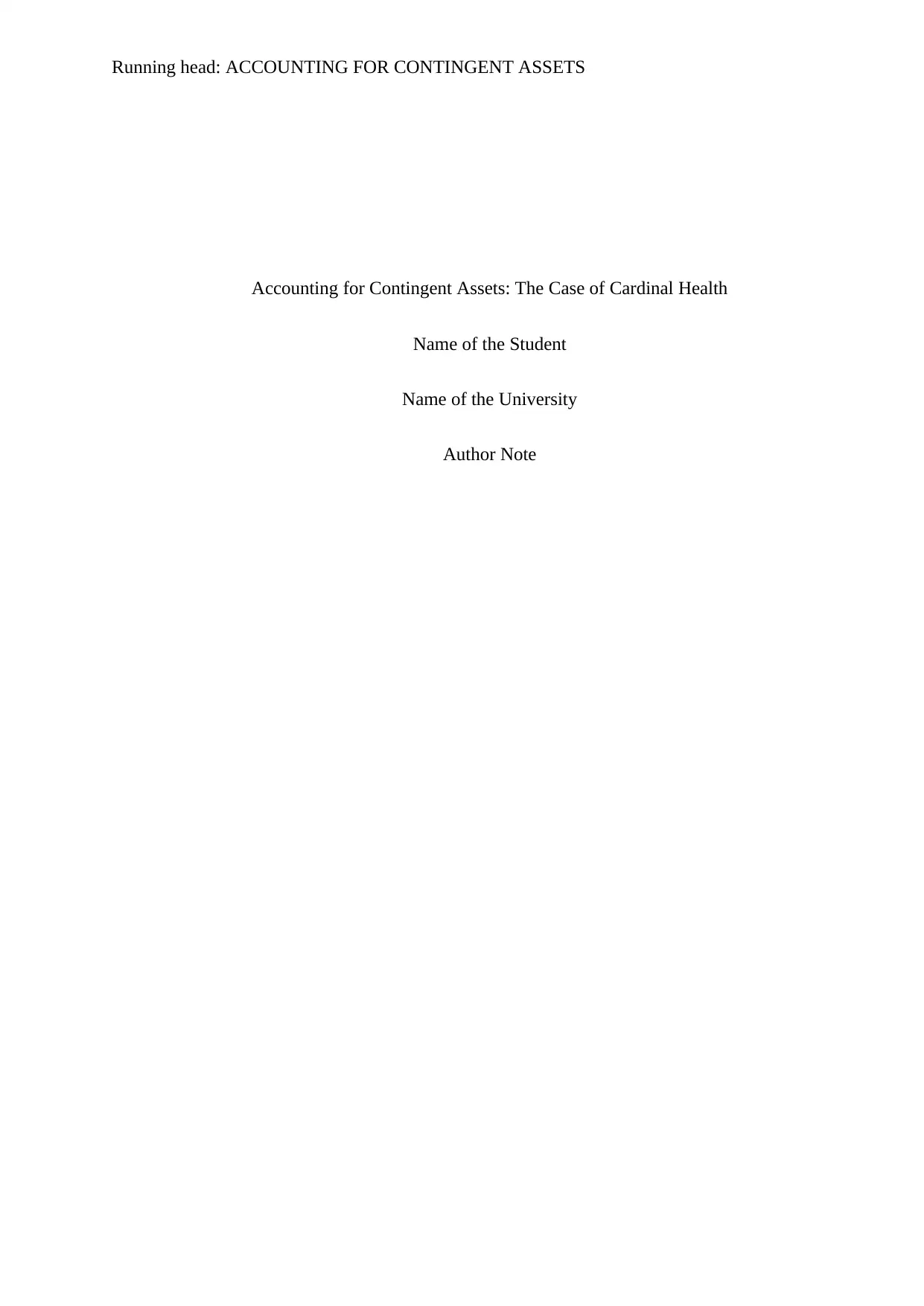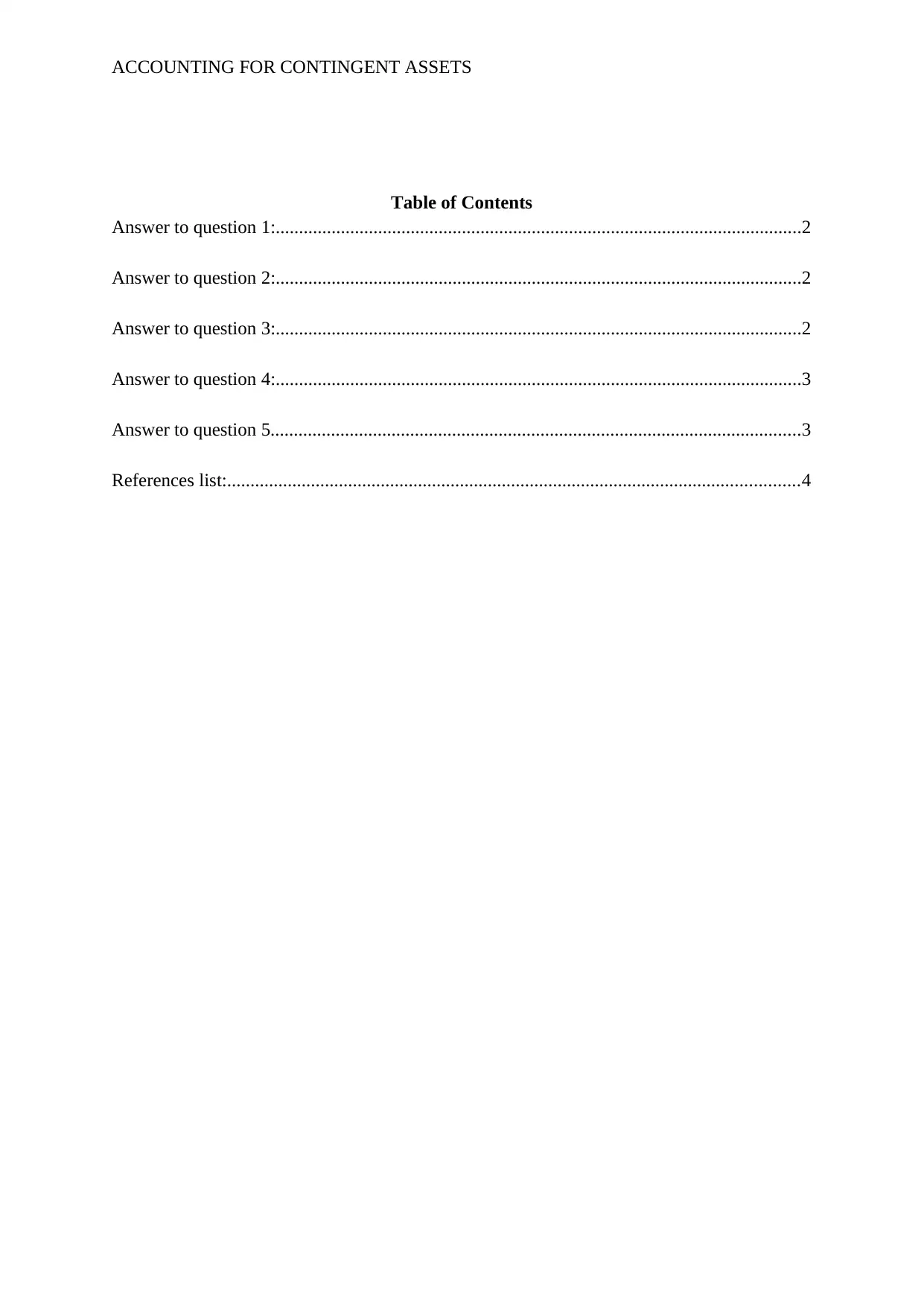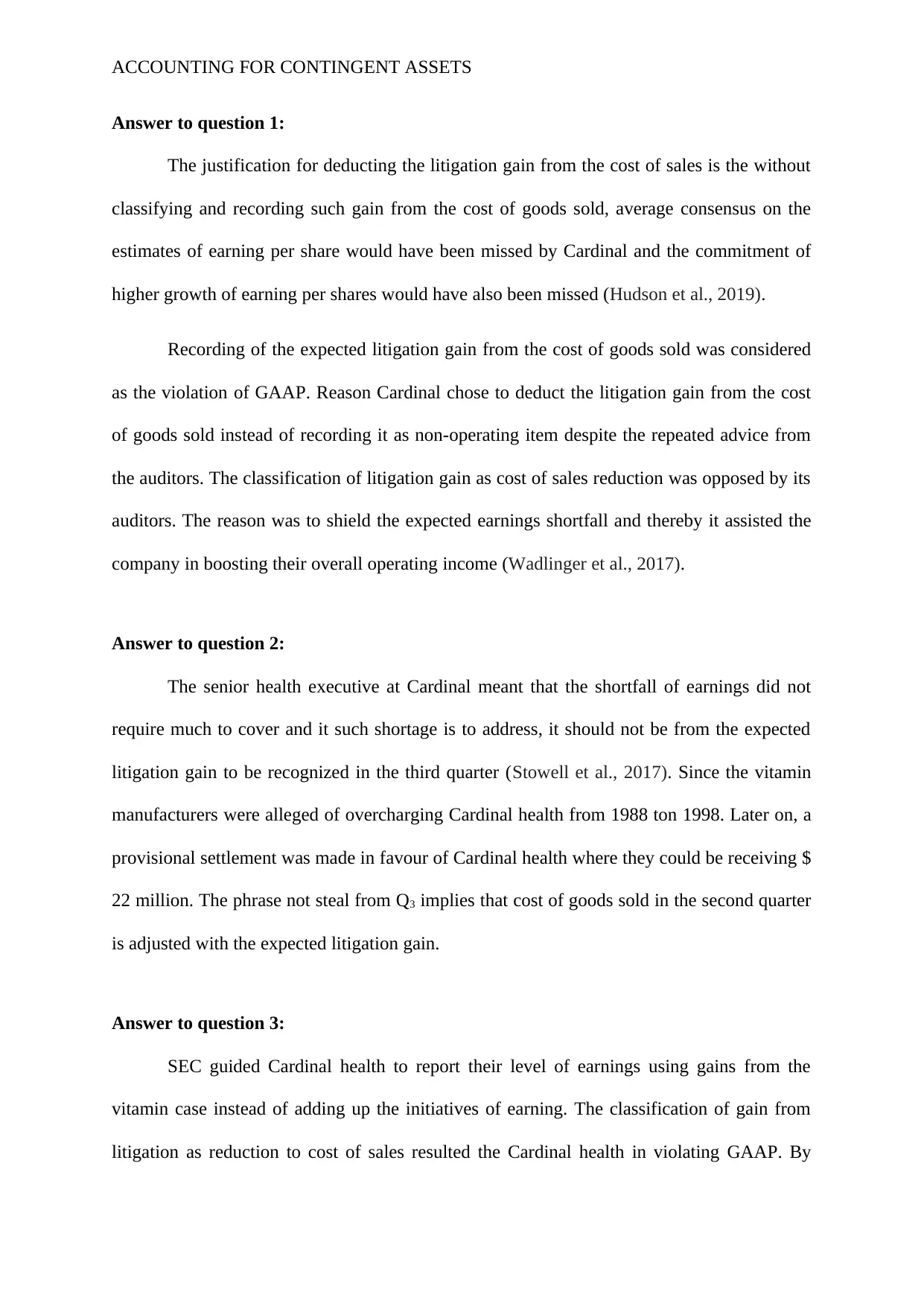Cardinal Health Case Study: Accounting for Contingent Assets
VerifiedAdded on 2022/08/24
|5
|823
|20
Case Study
AI Summary
This assignment analyzes the Cardinal Health case study, focusing on the company's accounting practices related to contingent assets and litigation gains. The case examines the justification for deducting litigation gains from the cost of goods sold, a practice Cardinal Health employed to boost reported earnings, despite violating GAAP. The assignment explores the motivations behind this decision, including the desire to meet earnings per share targets and the senior management's defense of their actions. It delves into the SEC's investigation and the misclassification of gains, which led to significant regulatory issues. The assignment discusses the timing of gain recognition, the implications of the company's actions, and whether the senior management's behavior constituted fraudulent activity. The analysis highlights the importance of adhering to GAAP and the consequences of manipulating financial statements to present a misleading financial picture. The case also highlights the ethical considerations involved in financial reporting and the potential impact on stakeholders.
1 out of 5








![[object Object]](/_next/static/media/star-bottom.7253800d.svg)